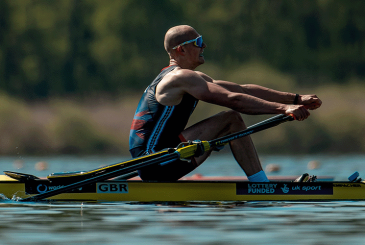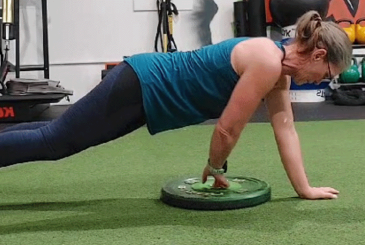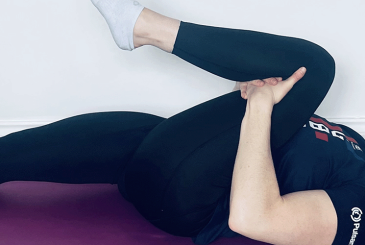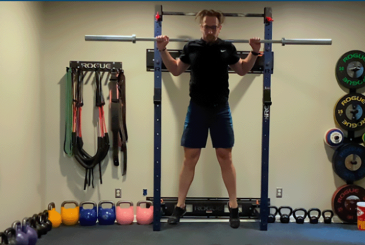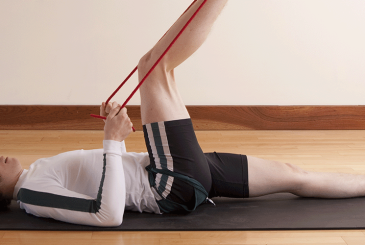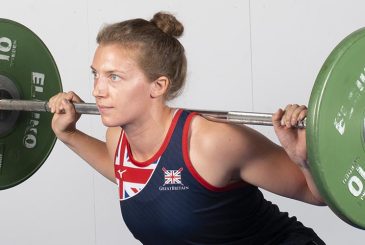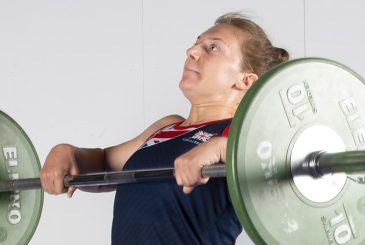From beginners to Olympians, juniors to masters, nothing floats our boats quite like getting out on the water. But if you want to really maximise your rowing, paying attention on land to the three pillars of movement, conditioning, and strength and power will pay big dividends in terms of athleticism and robustness.
In this first article drawing on British Rowing’s High Quality Land Training programme and the benefits it brings, we focus on the importance of effective movement range and control.
What does good movement mean within rowing?
To be athletic is to be able to move dynamically with efficiency. In any water session, rowers will ask their body to row hundreds of strokes. But without establishing control of your movement through that cycle of recovery, catch and drive, you’ll be less effective in moving the boat, and more injury-prone from overloading weaker muscles and joints.
To row a technically effective stroke requires movement range to achieve the right position, but also the right control to sustain it. Specifically a rower needs both range of movement to achieve the right rowing position to take an effective stroke, and the control of movement to be able to coordinate those positions to transfer power efficiently.
British Rowing’s High Quality Land Training programme highlights movement range and control as one of the foundations of good rowing, and says that rowers should develop this in the gym, the boathouse and at home, as well as on the water.
Those who are athletic and move well can achieve an effective rowing position and move freely and naturally with it. It requires effective posture, correct movement patterns, and good balance and coordination – with the hips, lower back and trunk, upper body and shoulders – working through the spine in a linked ‘kinetic chain’.
“If the rower can’t get into the required position, they won’t be able to row effectively and it’s more likely to cause injury,” says GB Rowing’s Chief Medical Officer Dr Ann Redgrave.
“Ensuring you have the foundations of moving properly are very important for how well you can row and longer-term for your well-being.
“You don’t want problems in later life caused by rowing badly – you must lay the foundations, like building a house.
“Without these, rowers can be vulnerable to problems in the back and hips, shoulders, knees, and elsewhere. And coaches should be looking after their athletes’ well-being beyond rowing.”
GB Start coach Dan Harris adds that these athletic ‘foundations’ should be laid on land before you attempt strenuous water work.
“Although people on learn to row courses are keen to get on the water, people can develop bad habits that it can take ages to unpick,” he says.
“Build the foundations first. The fundamentals of how you move and how you control it are ongoing through any rower’s training,
“We take our Start rowers on as complete beginners, but while they have good physical attributes, many are not very coordinated.
“We’ll take three to six months ingraining these fundamentals on land to make the required changes, so they can hold the correct rowing position and build an efficient stroke.”
If you want to be good at rowing, you must prioritise high quality land training
Mark Wilkinson, Director of Rowing at Windsor Boys’ School, agrees, saying: “If you want to be good at rowing, you must prioritise high quality land training. It’s finite how far you can go with technical development on the water without developing good movement patterns in the gym.
“Coaches say ‘reach out’, ‘rock over’ but if the rower is physically unable, they can’t do it. They have to learn in the gym.”
It’s a particular issue with juniors, he adds, with “Xboxes and modern life” leaving many lacking basic physical skills.
Developing stability and effective posture
“Kids don’t play outside like they used to… their flexibility isn’t so good, with poor control through their glutes and hips,” Mark explains.
“Many can’t do a basic lunge or squat, and it manifests itself in the boat as sitting ‘splodged’ on the seat, failing to rock forward and then, ‘time on the slide is time wasted’, rushing forward and not controlling the front end.
“We spend time developing stability through the glutes doing general gym exercises, such as teaching a proper press up, a supine pull, jumping onto a bench, lunging properly, basically moving through full range with control.
“And it feeds into control on the water, being sympathetic and letting the boat come to you. It’s a posture issue – the trunk is not supported through the pelvis. The ability to move with patience needs training.
“We do 20% less on the water, 20% more in the gym than five years ago, and the more in the gym, the better our results.”
GB Olympic Pathway Manager Tom Pattichis describes ‘effective posture’ as a ‘strong, relaxed position, that allows rowers to transfer power efficiently from the stretcher to the handle and blade’.
It needs to be linked to an effective ‘movement pattern’ – specifically how a rower sequences their movement through the stroke, transferring their weight, coordinating their limbs and engaging the appropriate muscle groups at the correct time.
Any activity, such as walking, bending, reaching and lunging, has movement patterns, which can all boost rowing by being trained on land. If you learn to move well outside the boat, this could help enhance how you move in the boat.
“The important thing is learning to control the position, with both stability and relaxation. This applies to any movement – be stable, with good posture, breathe properly and move freely and relaxed,” says Tom.
Mark adds: “At J14/J15 level, it’s not about lifting heavy weights. We do lots of tempo exercises emphasising control – a lot of movement pattern development.
“We also train ‘stability through instability’, offsetting lightweights slightly heavier on one side, so rowers compensate by using the trunk and glutes.
“And you must take a systematic approach to it; rowing is a repetitive action, and you’ve got to break it down in the gym,” he says.
“Commit to it every day – get them to think about everyday activities, such as coming into class, sitting down, standing up and doing it properly, rather than slumped. Everyday activities is a good way to reach youngsters.”
Coaching good movement
Unlike a constantly moving, twitching boat, the ergo is stable and also a key tool in coaching good movement.
“Right from the start, we put our rowers on it to examine and improve their position, observing where they lack control,” says Dan.
“For effective posture, sit them at the finish holding a neutral spine and throw balls to catch, looking for that disassociation from the trunk, a stable torso with active arms.”
With a rower weighing some 10 times more than a single scull, balance and co-ordination are important components on the water, but learning to balance yourself is the key.
“In terms of athleticism, you’re looking for dynamic agile rowers, but that takes time to build safely,” says GB Paralympic Head Coach Nick Baker.
“A major challenge for school and club rowing is that they are pushed for time, and one of the first things to go is training good movement. But make time, because it pays you back, and it’s just as important as other training.”
Nick Baker’s athletes do a 30-minute warm-up every morning to “get into stable and strong positions in the boat”, plus two Pilates sessions a week.
“It needn’t take so long, but club rowers should make mobility part of their routine, you can’t ignore it,” he says. “Focus on a key area each day. Hip one day, lower back the next, break it down.
“People are short of time, and want to get out on the water, so you can always do some as part of your warm-up or at home,” says Tom, “when I was working with Start Manager and Olympic gold-medal winning coach, Steve Gunn, he always emphasised training these skills – even standing on one leg when brushing your teeth helps.”
Where to start
Get ready to row with these six dynamic warm up exercises and use these three movement development exercises to start building the range and control of movement you need.
Key points
- If you want to be good at rowing then high quality land training is vital.
- Good movement is about being able to get into the correct rowing position and moving freely and naturally with it.
- The correct rowing position requires good range of movement around key joints, effective posture, correct movement patterns, and good balance and co-ordination – with the hips, lower back and trunk, upper body and shoulders – working through the spine in a linked ‘kinetic chain’.
- Ingrain the fundamentals on land so rowers can hold the correct rowing position and build an efficient stroke.
This article is an updated version of material first published in British Rowing’s Rowing and Regatta magazine in 2019.
Photo: Dianna Bonner
What do YOU want to read about on British Rowing Plus?
What do you find interesting here on British Rowing Plus that you’d like more of? What haven’t we covered yet that you’d like to read about?
Let us know by emailing [email protected]



